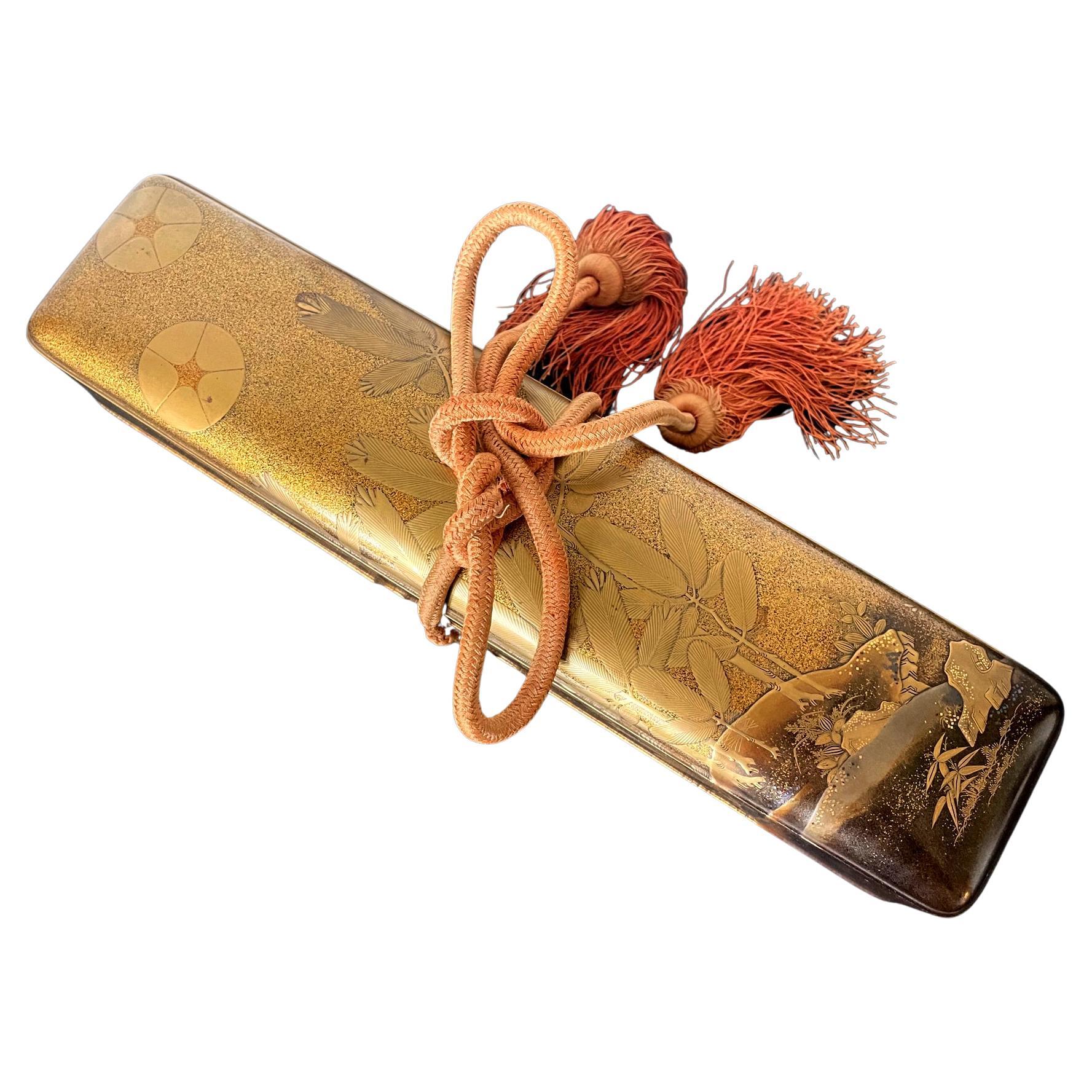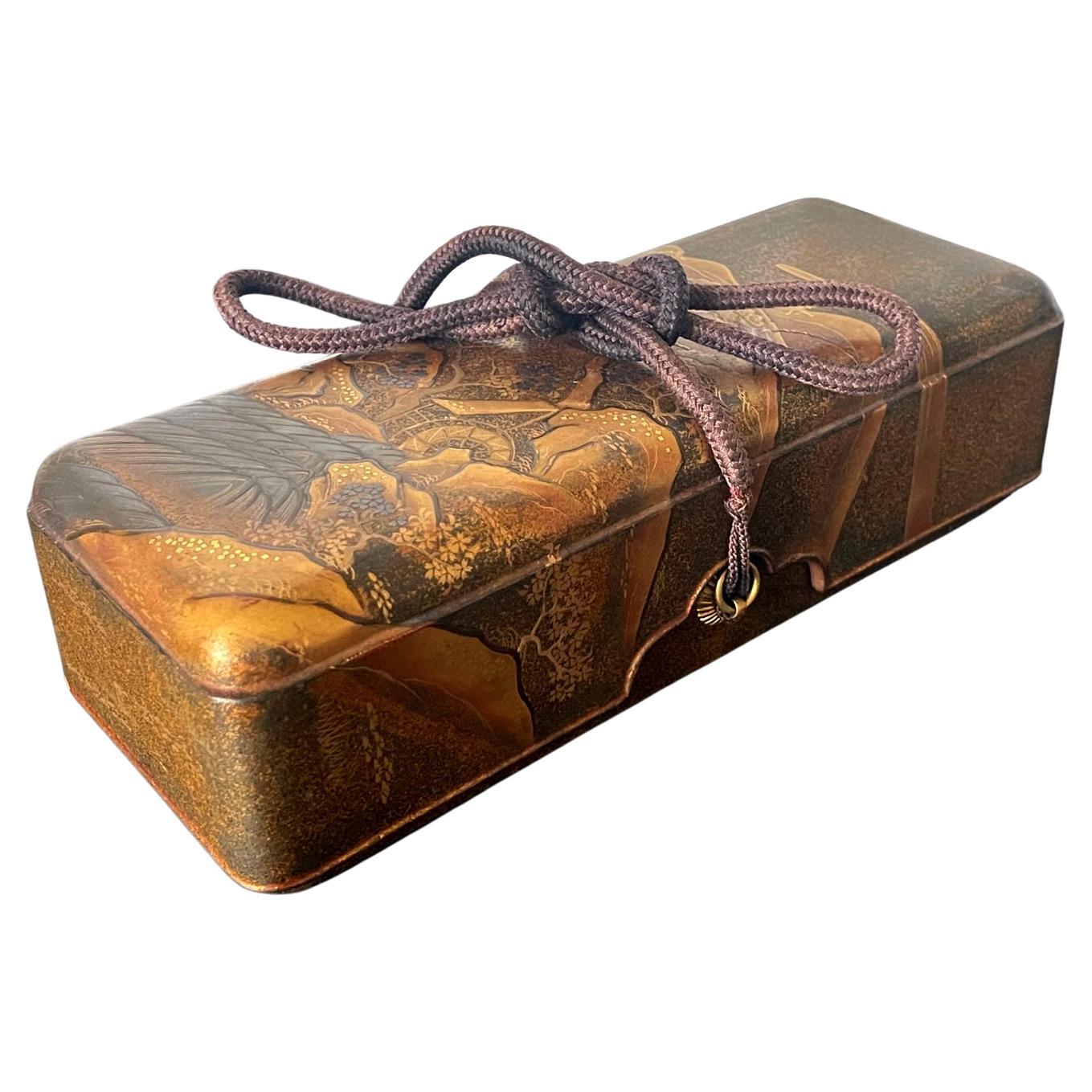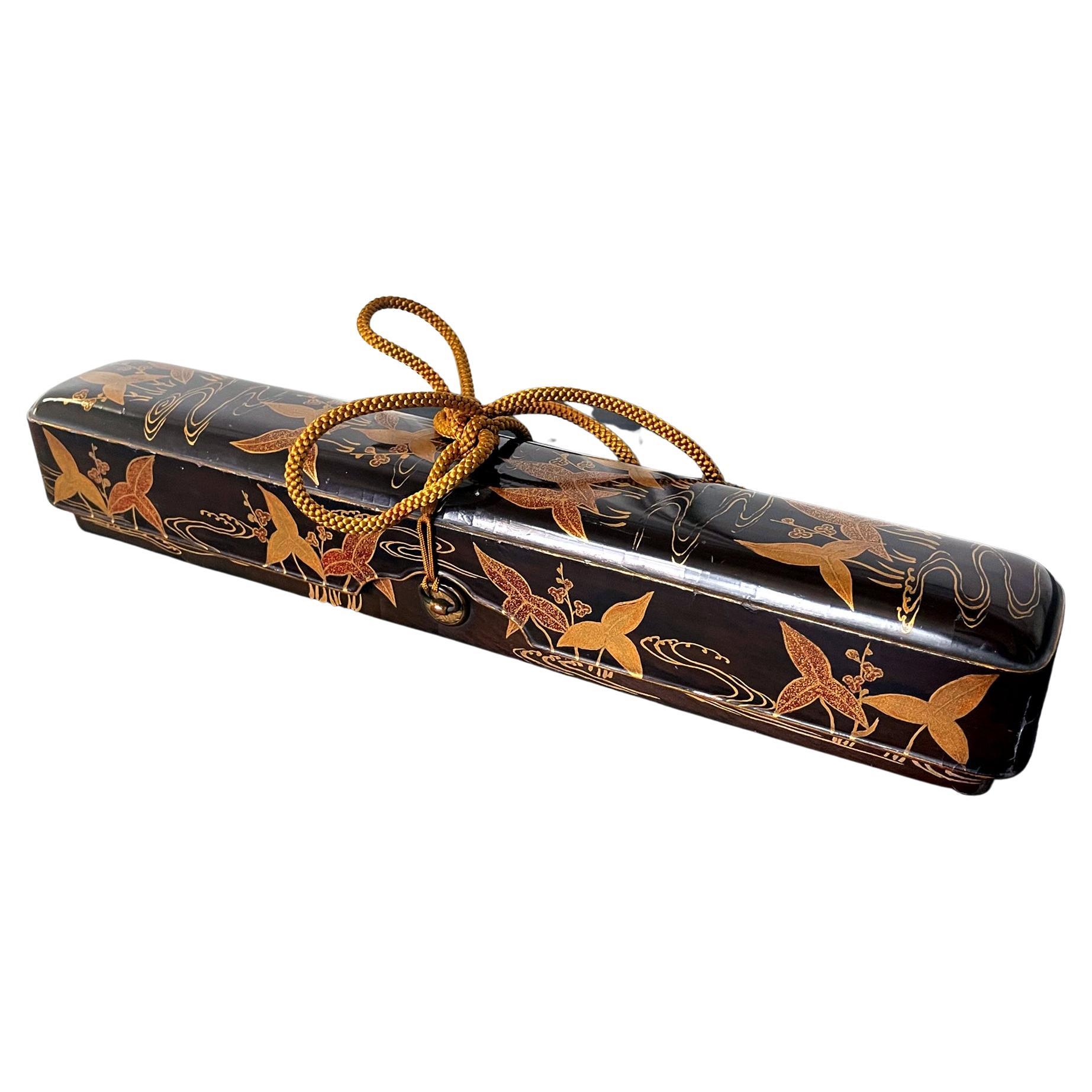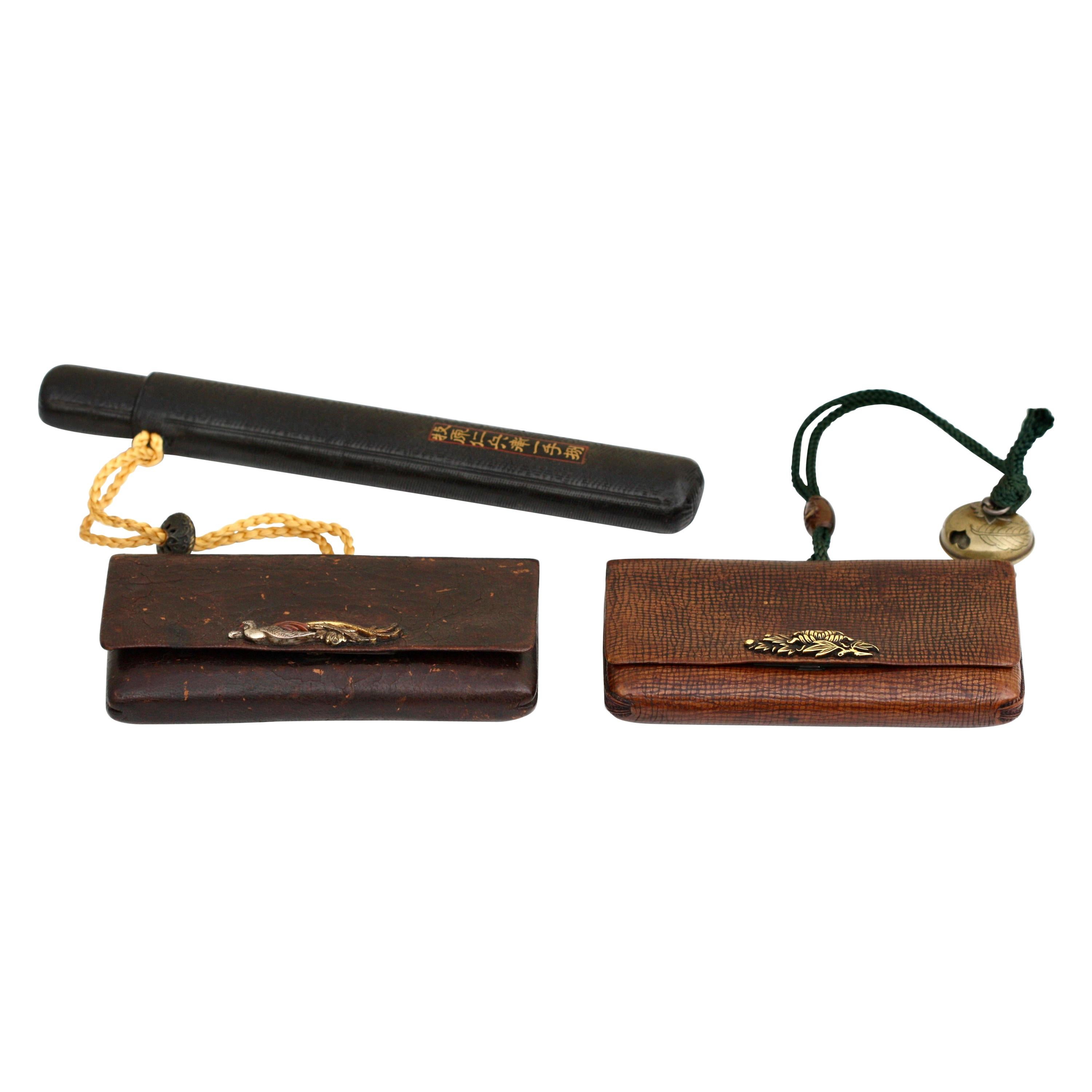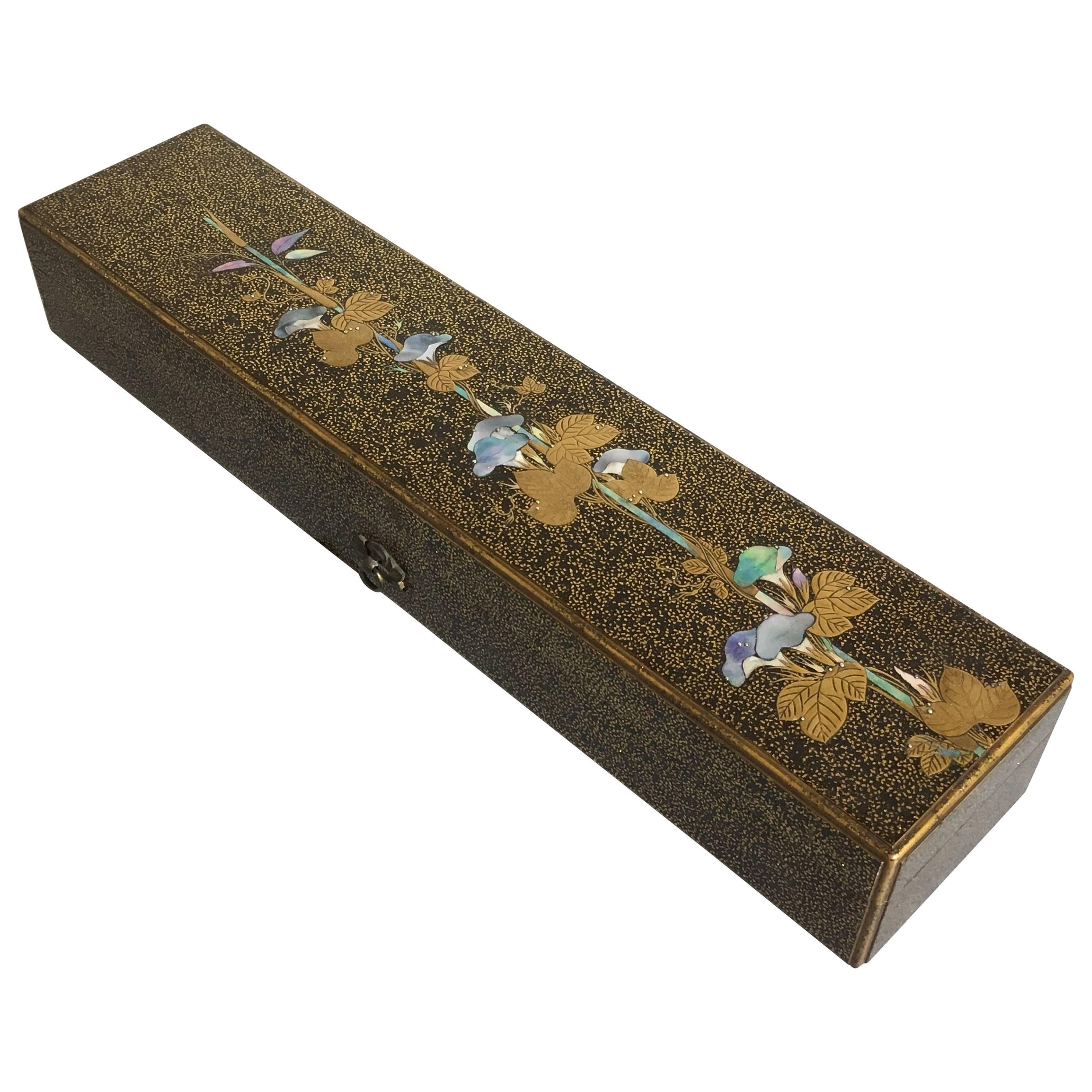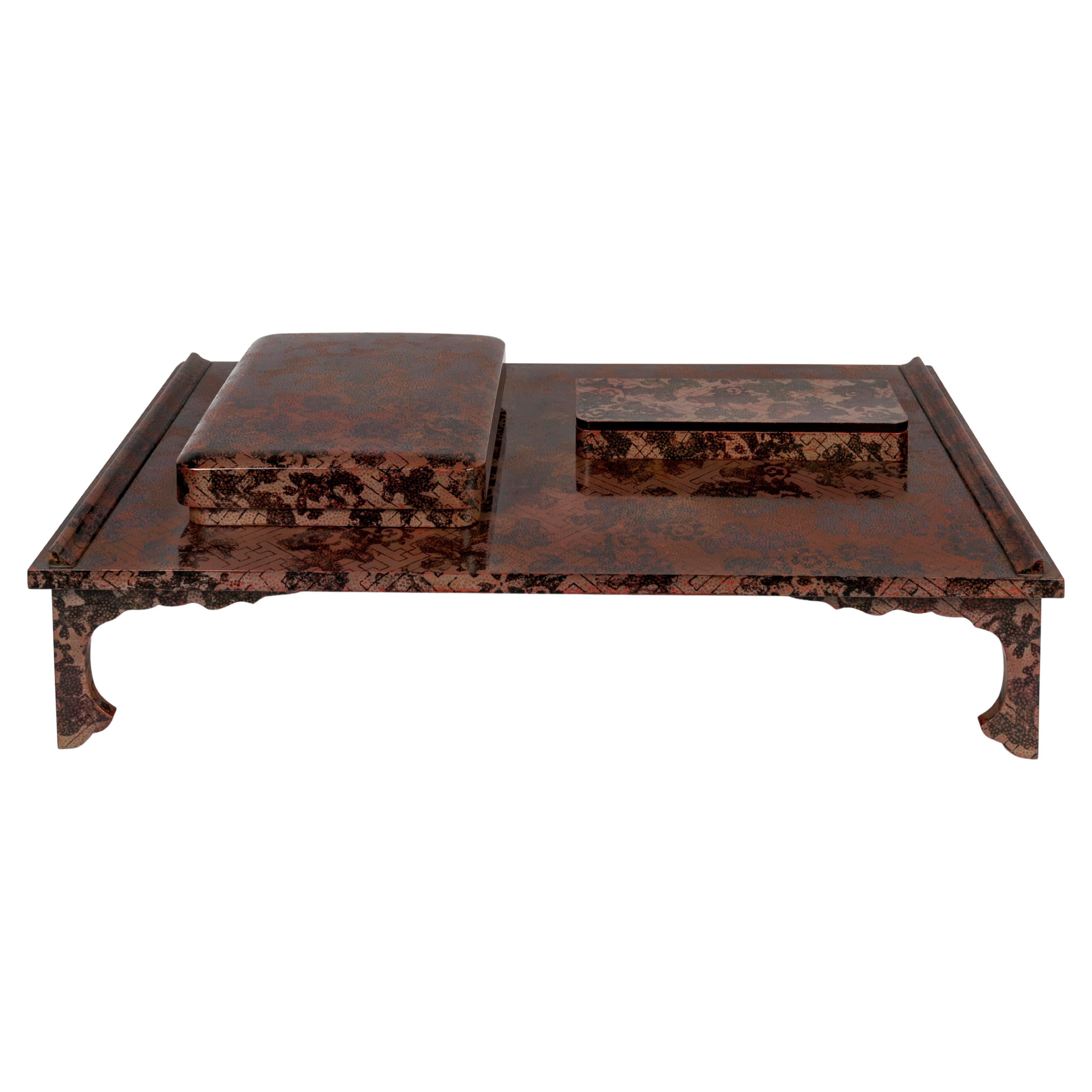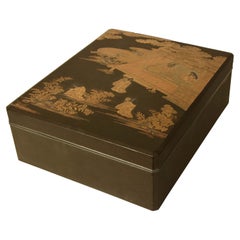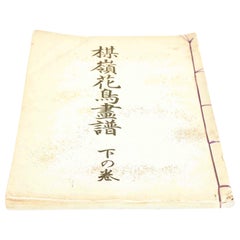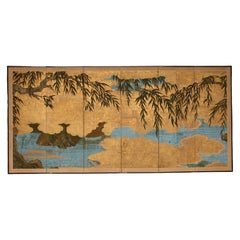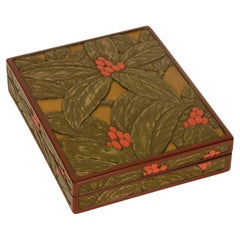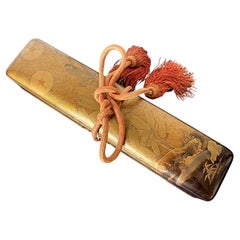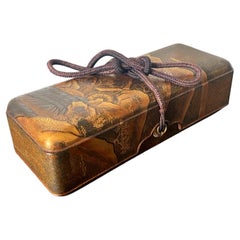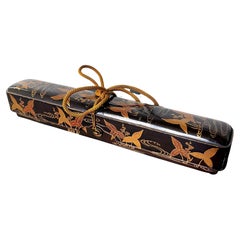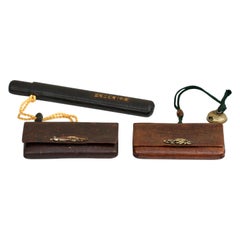Items Similar to Vintage Japanese Wakasa Lacquer Folder for Poems and Paintings
Want more images or videos?
Request additional images or videos from the seller
1 of 12
Vintage Japanese Wakasa Lacquer Folder for Poems and Paintings
$1,300
£964.65
€1,123.69
CA$1,809.61
A$2,015.16
CHF 1,048.78
MX$24,846.72
NOK 13,357.03
SEK 12,554.31
DKK 8,384.09
Shipping
Retrieving quote...The 1stDibs Promise:
Authenticity Guarantee,
Money-Back Guarantee,
24-Hour Cancellation
About the Item
A Japanese Wakasa lacquer folder to carry poems and paintings. It has a silver raised Togidashi maki-e design of cherry blossom, created by layering multiple coats of lacquer to build up the design. It is secured by a maroon silk tie. The interior is black lacquer, and it is signed on the base by the artist. Unlike other forms of lacquer ware production, the entire process of production of Wakasa is done by a single craftsman. Wakasa lacquer ware is prized for its artistic merit as well as its functionality.
It comes with the original paulownia wood storage box.
About the Seller
5.0
Vetted Professional Seller
Every seller passes strict standards for authenticity and reliability
Established in 1979
1stDibs seller since 2015
81 sales on 1stDibs
- ShippingRetrieving quote...Shipping from: Prahran, Australia
- Return Policy
Authenticity Guarantee
In the unlikely event there’s an issue with an item’s authenticity, contact us within 1 year for a full refund. DetailsMoney-Back Guarantee
If your item is not as described, is damaged in transit, or does not arrive, contact us within 7 days for a full refund. Details24-Hour Cancellation
You have a 24-hour grace period in which to reconsider your purchase, with no questions asked.Vetted Professional Sellers
Our world-class sellers must adhere to strict standards for service and quality, maintaining the integrity of our listings.Price-Match Guarantee
If you find that a seller listed the same item for a lower price elsewhere, we’ll match it.Trusted Global Delivery
Our best-in-class carrier network provides specialized shipping options worldwide, including custom delivery.More From This Seller
View AllSuperb Japanese Black Lacquer Document Box with Gold Maki e Design, Meiji Period
Located in Prahran, Victoria
An antique black lacquer document box with an exquisitely detailed, finely wrought design from The Tale of the Genji depicted in gold maki e across the lid. Internally, the box is de...
Category
Early 20th Century Japanese Lacquer
Materials
Wood, Lacquer
$5,200 Sale Price
20% Off
A Fine Collection of Prints and Paintings of Birds and Flowers by Kono Bairei
By Kono Bairei
Located in Prahran, Victoria
A volume of prints and paintings by Japanese artist Kono Bairei (1844-1895), well known practitioner of the Ukiyo e school during the Meiji period. He was born and lived in Kyoto, sp...
Category
Antique 19th Century Japanese Paintings and Screens
Materials
Paper
Japanese antique screen - EDO period - Willow over a stream
Located in Prahran, Victoria
Antique Japanese 6 panel screen from the early Edo period (C1650). One of a pair (both available). This magnificent golden screen shows...
Category
Antique 1650s Japanese Edo Paintings and Screens
Materials
Gold Leaf
Intricately Carved Kamakura Lacquer Box with Botanical Design by Tamerou Ono
Located in Prahran, Victoria
A vintage Japanese Tsuzuri bako, writing box. with an unusual, deeply carved relief of Japanese sarcandra glabra, a woody herbal sub-shrub native to Asia with deep green glossy leave...
Category
Mid-20th Century Japanese Lacquer
Materials
Wood
Japanese Black Lacquer Document Box with Gold Plum Blossom Design, Taisho Period
Located in Prahran, Victoria
A high quality, antique, Japanese black lacquer document box. It has an external design of gold maki e plum blossoms. In Japanese culture plum blossom symbolises the beginning of Spring, having its own festival, the Ume Matsuri, alongside the more famous cherry blossom festival...
Category
Vintage 1920s Japanese Lacquer
Materials
Wood, Lacquer
$2,880 Sale Price
20% Off
Antique Japanese Kano School Painting by Yosenin Korenobu
Located in Prahran, Victoria
Six-panel Kano School tiger screen by Yosenin Korenobu (1753-1808). Sumi-e ink on paper, late 18th century.
Dimensions: H 169cm x W 382cm.
Category
Antique Late 18th Century Japanese Edo Paintings and Screens
Materials
Wood, Paper
You May Also Like
Japanese Lacquered Gold Maki-E Naga Fubako Meiji Period
Located in Atlanta, GA
A Japanese lacquered wood Naga Fubako (a long box used to store document or large scroll painting), circa 19th century Meiji period. The rectangular box features an unusually deep lipped lid with slightly rounded corners, a conforming lower box with bronze medallion rings with tasseled...
Category
Antique 19th Century Japanese Meiji Lacquer
Materials
Wood, Lacquer
Japanese Lacquered Maki-e Fubako Edo Period
Located in Atlanta, GA
A Japanese lacquered wood fubako (a box used to store document or small scroll painting), circa second half of 19th century late Edo period. The rectangular box features an unusually deep lipped lid with slightly rounded corners, a conforming lower box that is almost entirely covered by the lid which has two bronze medallion rings with tasseled...
Category
Antique 19th Century Japanese Edo Lacquer
Materials
Wood, Lacquer
Japanese Lacquered Maki-E Fubako in Kodaiji Style
Located in Atlanta, GA
A rare Japanese lacquered wood fubako decorated in Kodaiji maki-e style circa early 17th century the beginning of the Edo period, possibly early toward the end of the Azuchi-Momoyama period. The rectangular, long and slim box features a deep lipped lid with slightly rounded corners, a conforming lower box with two bronze medallion rings with tasseled...
Category
Antique Early 17th Century Japanese Edo Lacquer
Materials
Wood, Lacquer
Three Antique Japanese Items
Located in West Palm Beach, FL
Three Antique Japanese Items
1)
An antique Japanese tabako-ire' with hand tooled gilded kane mono of fuji chrysanthemum. Bronze and shakudo oj...
Category
Antique 1880s Antiquities
Materials
Wood
Japanese Edo Period Igarashi School Long Lacquer Box, Tanzaku-Bako
Located in Austin, TX
A stunning Japanese Edo period lacquer tanzakubako, box for poem cards, late 18th-early 19th century, Edo Period, Japan.
Attributed to the Igarashi School, this box is masterfully ...
Category
Antique Early 19th Century Japanese Edo Lacquer
Materials
Mother-of-Pearl, Lacquer
Japanese writting set in waqasa lacquer including bundai ryoshibako and fudebako
Located in PARIS, FR
Set of bundai, ryōshibako and fudebako in wakasa lacquer with an old rose background and black traditional Japanese patterns.
The saya pattern (or sayagata) is composed by Chinese svastikas. This symbol linked to Buddhism, mean intelligence, power and peace. It is a good omen sign.
The kanoko pattern reminds stains on fawn back.
The sakura (cherry blossom) pattern is emblematic of Japan. The blossoming in a short time marks spring beginning and is a symbol of renewal and ephemeral beauty.
There are also traces of calligraphy brush, in reference to the function of the objects.
Bundai is a low table used to put books or scrolls and, later, to write.
Rectangular ryōshibako (letter and document box) with a slightly domed
Fudebako (pencil case) of rectangular format very narrow in its length with two rounded corners, flat cover.
Wakasa lacquerware...
Category
Early 20th Century Japanese Taisho Lacquer
Materials
Lacquer
More Ways To Browse
Black Lacquer Storage
Vintage Black Lacquered Furniture
Vintage Japanese Lacquer
Black Lacquered Boxes
Black Lacquer Asian Painting
Maki E
Cherry Wood Box
Vintage Craftsman Box
Silk Cherry Blossom
Vintage Japanese Lacquer Box
Vintage Lacquer
Japanese Lacquer Ware
Japanese Wakasa Lacquer
Japanese Wood Inlay
Japanese Wood Tray
Red Lacquer Boxes Asian
Chinese Cinnabar
Japanese Lacquered Tray
